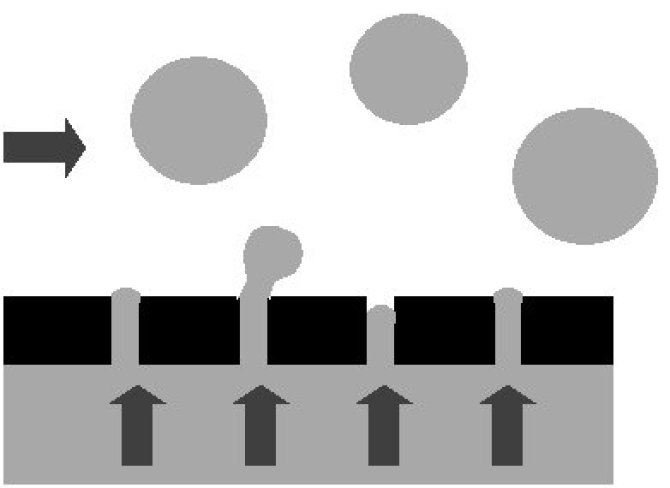Thames
Toward Highly Advanced Membrane Emulsification Systems
Emulsions are commonly produced in the food industry. A relatively new method to produce emulsions is membrane emulsification. In this process the dispersed phase is pressed through a membrane while the continuous cross-flow on the other side of the membrane detaches the droplets. Advantages of this process are the low energy consumption, control of droplet size and droplet size distribution and the low shear stresses that are needed. The mild conditions are an advantage for the production of double emulsions. However, this process can still be optimised, for example by choosing the most optimal membrane. Therefore it is very important to get a thorough understanding of the process of droplet formation and the influence of the different parameters (like pore geometry and kind of membrane) on it.Project description
The experimental part of this research focusses on the visualisation of the fast processes of droplet formation and droplet detachment with a high speed camera. With this high speed camera 10.000 pictures per second can be taken. In this way it is possible to study the influence of different pore shapes on for example the droplet diameter and the droplet formation time. Besides the influence of the pore geometry, the influence of different emulsifiers is studied. Emulsifiers are thought to have an enormous influence on this process. By comparing different emulsifiers the influence of the interfacial tension on the process can be studied. With the lab-scale setup it is possible to produce emulsions in larger quantities, which can be analysed afterwards.
The theoretical part consists mainly of lattice Boltzmann simulations, a simulation technique which is especially suited for mesoscopic phenomena, like droplet break-up. In this method particles move and collide on a lattice following kinetic theory. To model membrane emulsification a multiphase model, based on a free-energy approach, has been developed. Also the kinetics of emulsifiers will be incorporated in this model.
